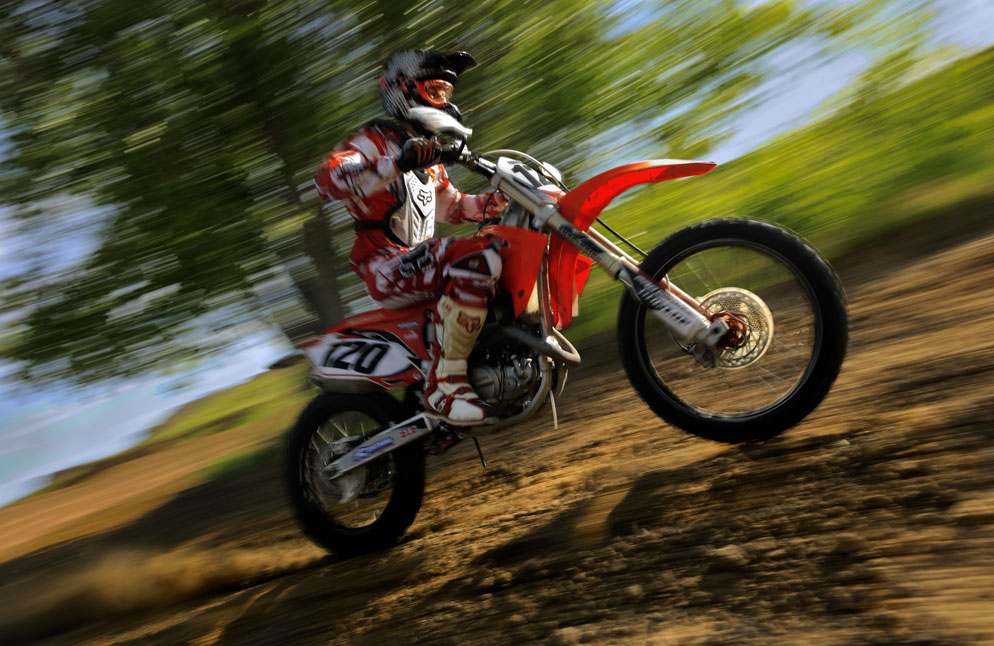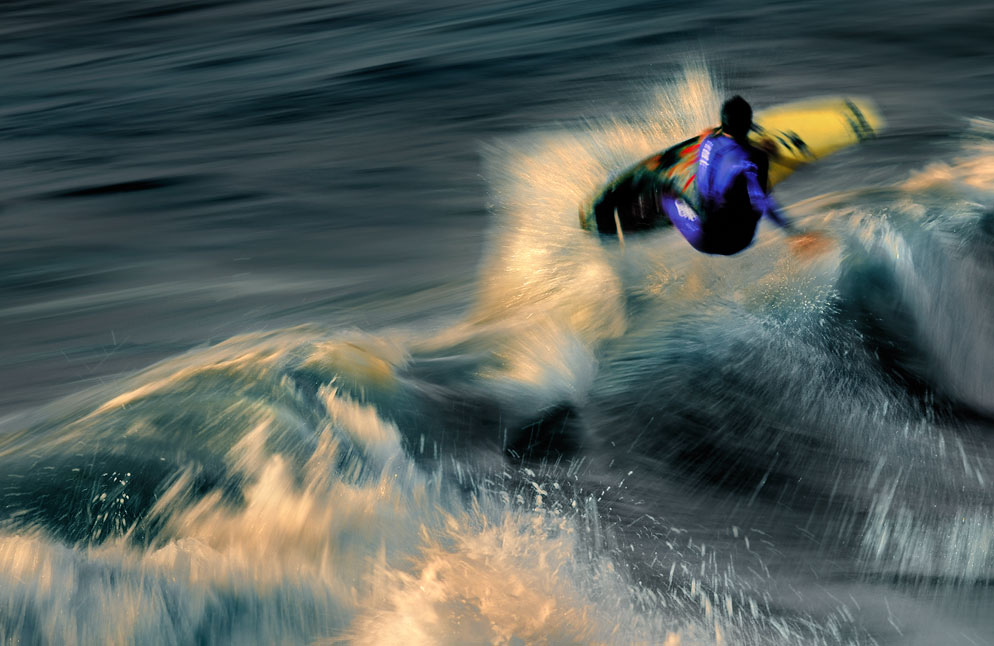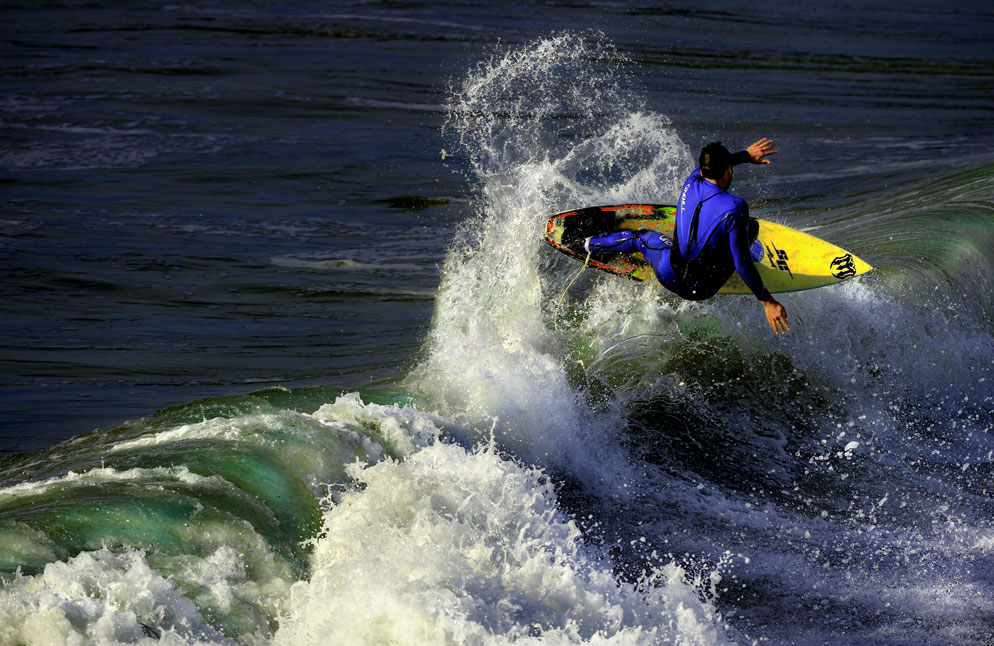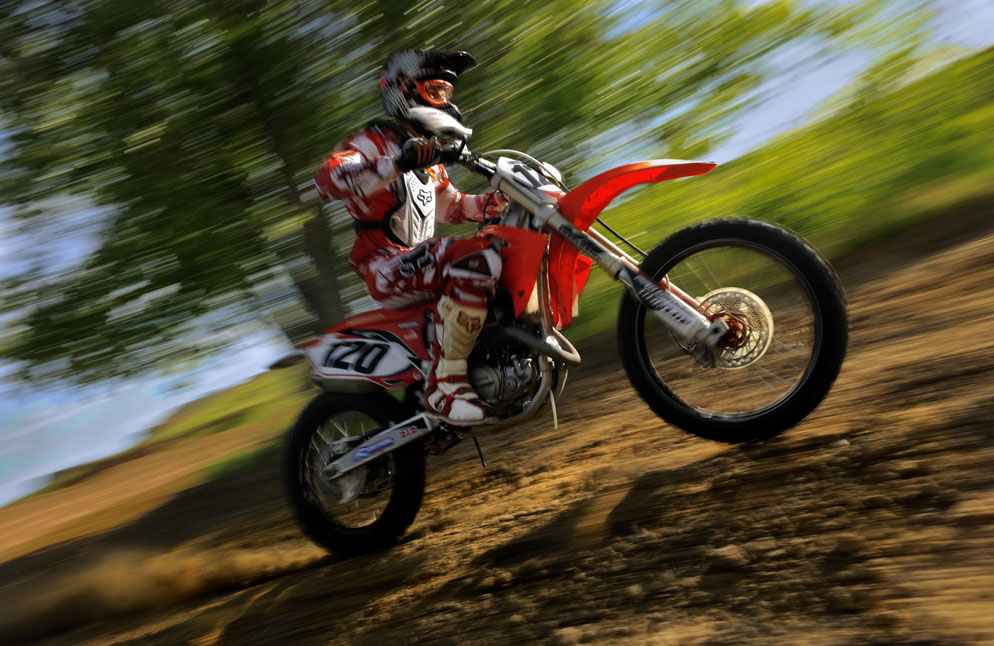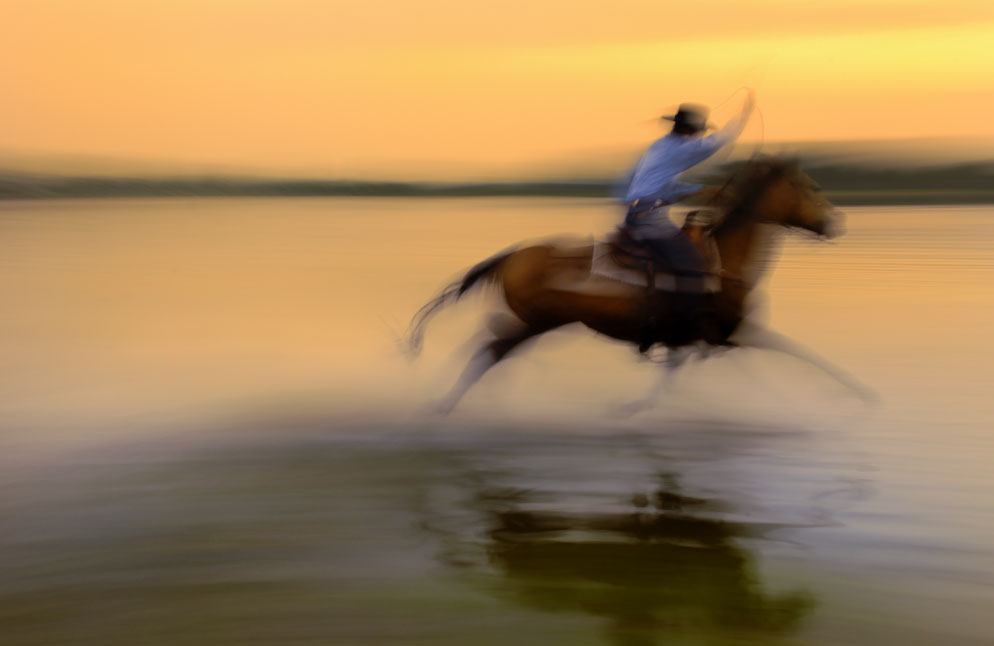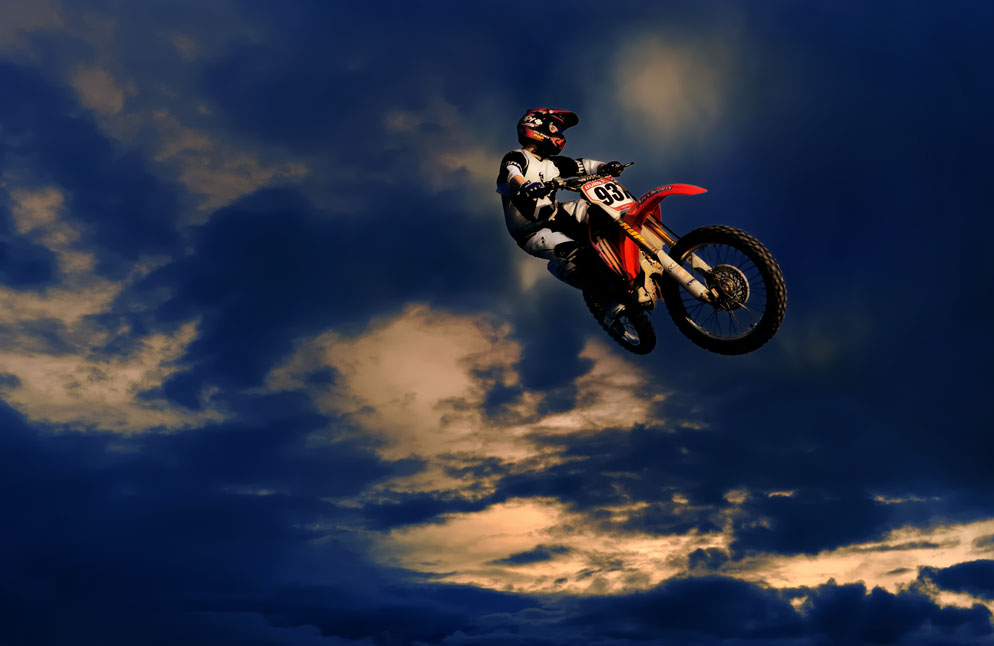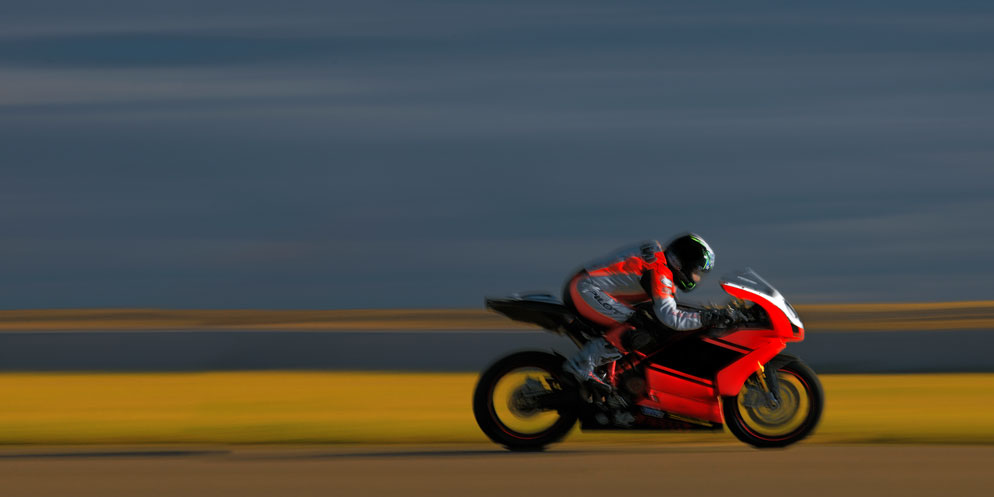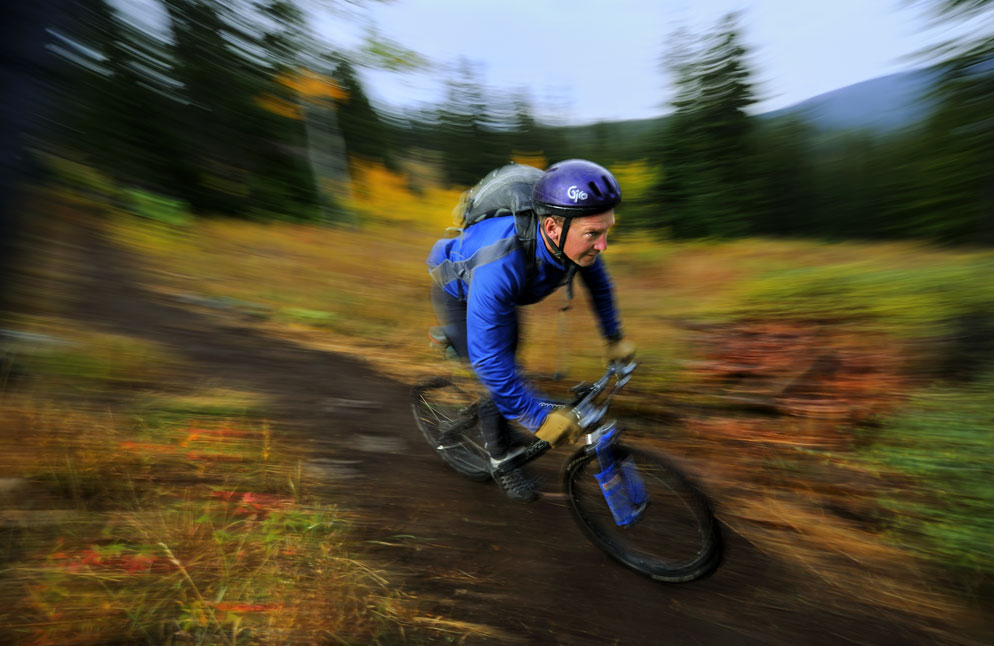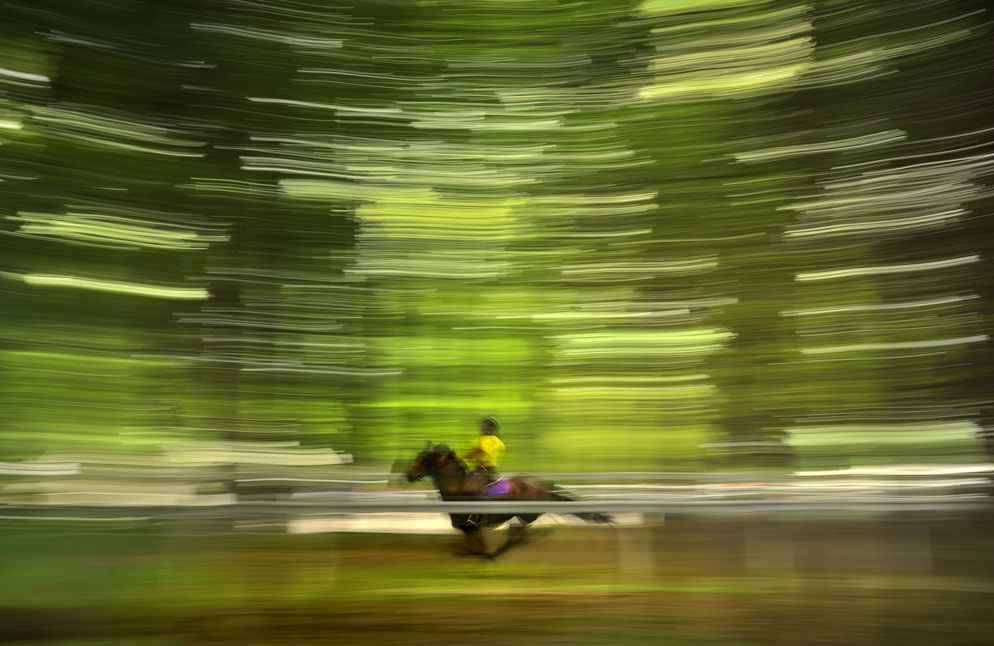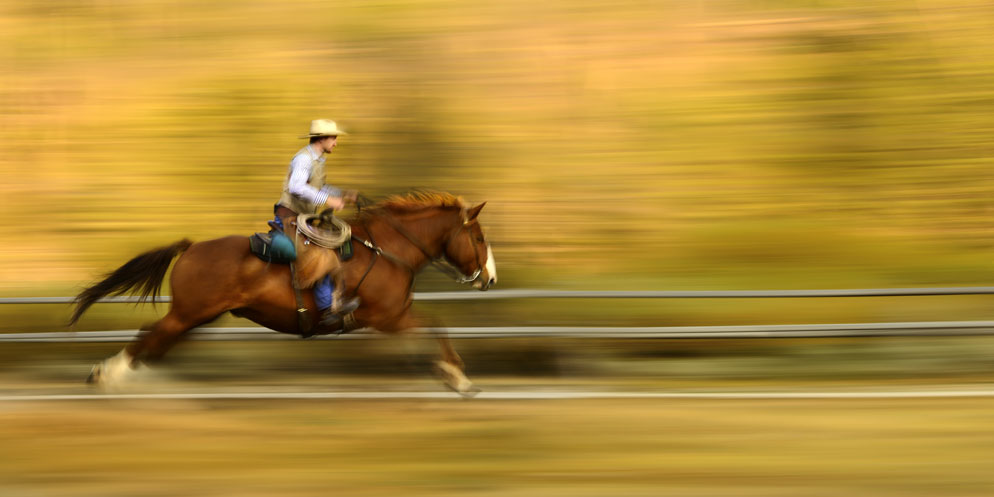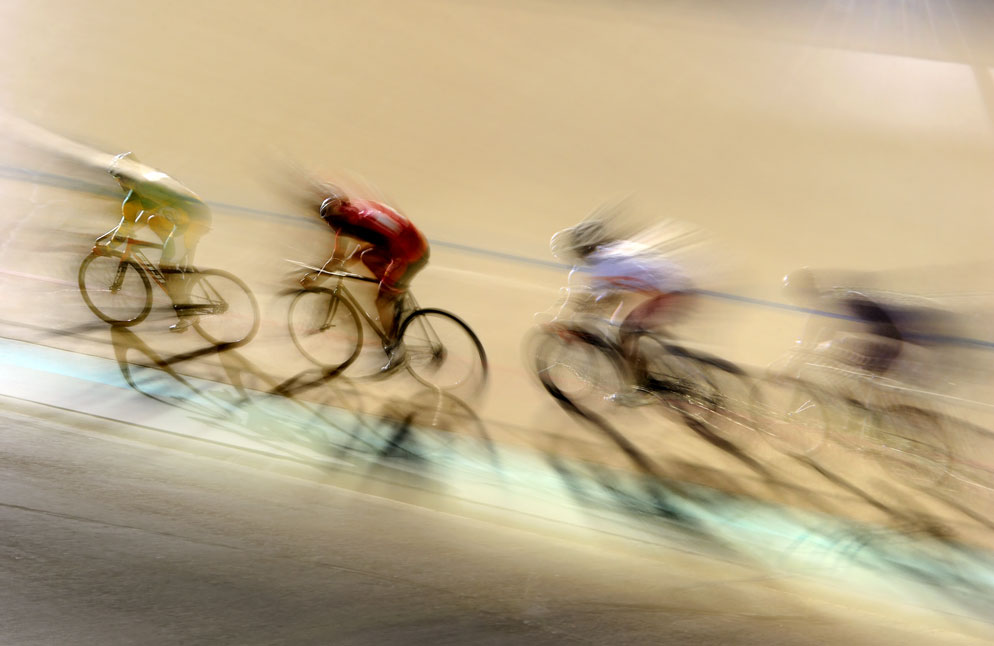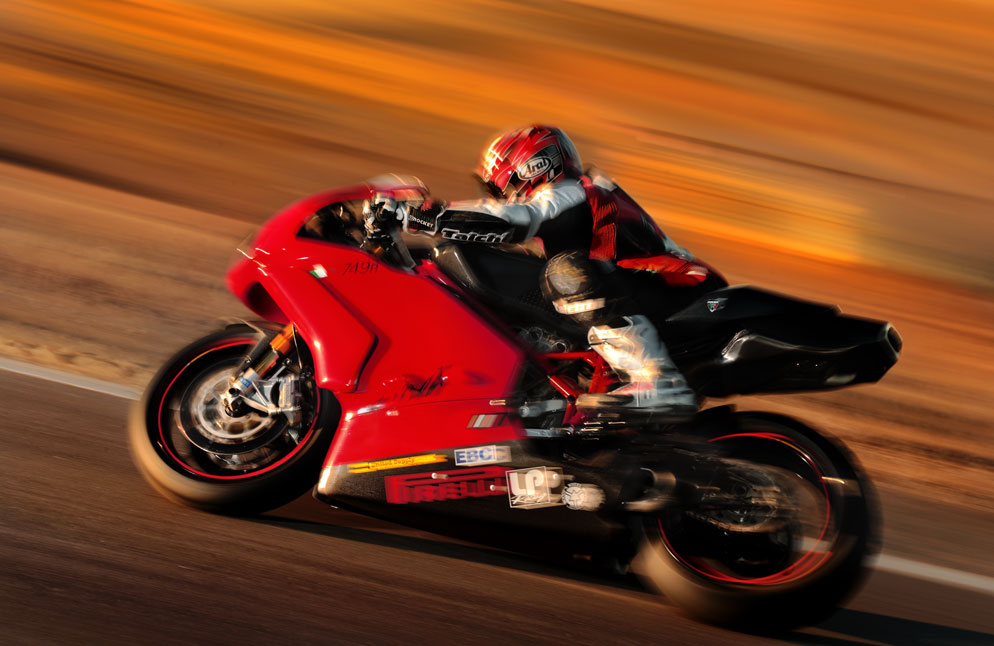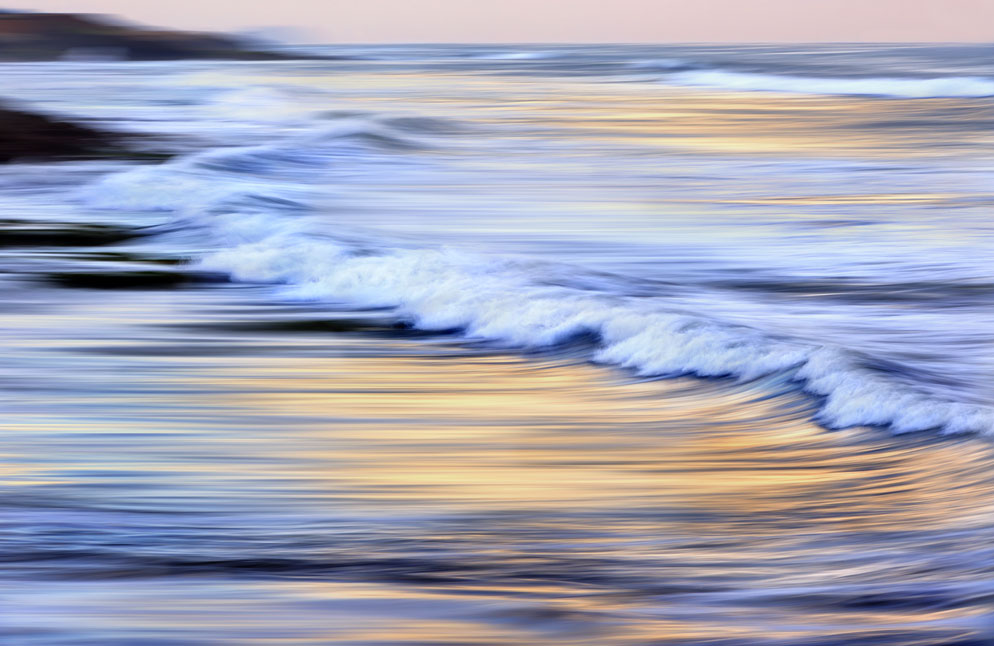10 Tips for Better Camera Panning
Perfecting the technique of panning to show motion
Okay, no one can guarantee perfect pans, but with practice, patience and a grasp of the basics, dramatic images of subjects in motion are certainly well within reach.
Panning is not about movement, it is movement, and that's what makes it challenging: it's the following of a moving subject along its plane of motion. Most often it's a horizontal plane with the subject a runner, a rider, a motorcyclist, a race car. But it could be motion along a vertical plane; think of panning with a diver as she goes from the board to the water.
In concept, panning is easy: set your shutter speed to freeze motion or blur it, move your camera with the action and snap the shutter. But it's how you handle the details of the concept that will determine the success of your images.
To get to the finer points of those details, we talked with pro shooter, and Nikon Ambassador, Dave Black. Primarily a sports photographer, Dave is always looking for a variety of ways to photograph action, and, he says, "Most of the time following and capturing action means panning."
In their general order of importance, here's what Dave has to say about his panning methods and techniques.
Choosing the Shutter Speed. The first thing workshop students ask Dave is what shutter speed should they use to make their pans. "That depends on how fast your subject is moving," he replies, "and how much motion or speed you want him to appear to have." First, realize that panning with a subject applies even when the desired result is a subject frozen in the midst of motion. "When you've got a subject flashing through the frame, you can't stand still and hope to catch him and freeze him," Dave says. "Pan with him and stop his motion with a fast shutter speed." Slow that shutter speed and his motion isn't stopped, it's evident. But how slow is "slow"? Some guidelines suggest starting at 1/30 or 1/20 second and moving up or down from there. Dave's photos here show those speeds as well as 1/15, 1/6 and 1/4 seconds. As you've probably guessed, experimentation and experience have a lot to do with your shutter speed choices, and there's no substitute for a lot of shooting to build a memory database of what works best in various situations. "My experience allows me to go way down in shutter speed, lower than a lot of people go," Dave says. Regardless of the shutter speed you choose, take this tip with you: "Start moving with your subject before you press the shutter, and continue to move with him after you've pressed it. You want to follow through, just as you would with a golf swing."
Simulating the sun, Dave had placed Speedlights to the right side of the track, while sunshine streamed in from the left, behind the rider. "He's coming around a corner and not moving very fast at all, probably not even ten miles an hour." D3X, AF-S NIKKOR 24-70mm f/2.8G ED, 1/60 second, f/8, ISO 100, manual exposure, Matrix metering; three Nikon SB-900 Speedlights, SU-800 Wireless Speedlight Commander.
Keeping Something Sharp. "You're striving to have something in the picture sharp," Dave says. "A pan with everything blurry is annoying to people; something has to be sharp to hold their eyes in the picture." If you're photographing, say, track-and-field sprinters, panning with them and shooting at 1/1000 second will freeze them. Choose 1/125 second, though, and focus on one sprinter, and his face will likely be pretty sharp, but his arms and legs will be a blur of motion, as will the background. "If you get two or three elements sharp, chances are you have a keeper," Dave says.
No Speedlights for this pan, but there's enough sharpness to almost have a flash look to it. D2X, AF-S DX Zoom-NIKKOR 17-55mm f/2.8G IF-ED, 1/5 second, f/13, ISO 250, aperture priority, Matrix metering.
Using Flash. To guarantee that something will be sharp, use flash, and set your Speedlight for rear curtain sync, a technique in which the flash fires at the end of the exposure. When you combine rear curtain sync with low shutter speeds, a blur effect resulting from the scene's ambient light combining with the flash gives you flowing-light patterns following your moving subject; the subject's movement will be frozen at the end of the light flow. Dave used rear curtain sync for all the flash photos you see here. He also used three or four Nikon Speedlights for each flash image, but it's important to note that in all instances, only one was needed. Because he had multiple units in a FourSquare softbox already set up for other applications, it was a lot easier for him to simply dial down the power output of each Speedlight rather than remove units from the FourSquare. "In every case where flash was used, one Speedlight would have done the job just fine," Dave says. A final flash note: Dave sets his Speedlights for manual operation and controls their output by increasing or decreasing their power.
Making a Focus Choice. "I tell people to use whatever autofocus mode or method they feel most comfortable with," Dave says. "When my subject has a consistent line of movement through a specific area, I will sometimes use what sports photographers call zone focus, which is an old photography term that simply means the photographer will pre-focus on a specific area, lock focus on that area and then press the shutter as the subject arrives in that area."
For this technique, Dave uses the AF-ON button on the back of his Nikon D-SLR. He touches the button, achieves focus and then by taking his thumb off the button, locks the focus. "This technique allows me to compositionally place the subject anywhere in the frame," he says. And with small aperture f/stops, he's got some depth-of-field insurance coverage. "With my focus locked, all I have to concentrate on is keeping very level and steady and moving smoothly with the subject." For subjects moving in unpredictable ways, he'll choose to track them using AF-C, continuous servo autofocus. Finally, his focus choice has an effect on his framing rate. "Using zone focus I'll generally shoot two frames as my subject passes through the zone. If I'm using continuous focus, I might shoot a burst of five frames."
A basic subject, background, tripod-mounted camera setup that's ideal for first efforts at panning. "He's pretty close to the wall and you can see the speed effect of that short distance. If I know where a motorcycle rider is going to be, I prefocus right on the pavement and lock the focus in. If I have control of a subject, I'll set him in the spot I want and then lock focus on him." D3, AF-S NIKKOR 70-200mm f/2.8G ED VR II, 1/15 second, f/10, ISO 200, manual exposure, Matrix metering.
Hand-Held or Tripod-Mounted? If your subject is on a predictable, "near perfect" plane, a tripod is probably a good idea, and Dave uses a 30-year old Wimberley head on his. But because sports and action events often aren't predictable, he says hand-held is "really good for people to learn." He suggests a solid stance with elbows and arms in, then a flexing of knees and a smooth swing of the body to follow the subject. "It's not a pivot at the waist, but you should try that, too—or whatever else you like. Most things involved in panning are a case of whatever works for you, and the more you work at it, the more you'll discover what that is."
"You can run faster than he's going, but he's coming at an angle toward the camera and I'm very close to him." D700, AF-S NIKKOR 14-24mm f/2.8G ED, 1/25 second, f/11, ISO 200, manual exposure, Matrix metering; three SB-900 Speedlights, SU-800 Wireless Speedlight Commander. Speedlights at one-eighth power lit the side of his face."
The Matter of Distance... The farther the subject is from you, the slower it will appear to be going and the easier it'll be to stay with during your pan. But the closer it is to the background, the more pronounced the appearance, the visual sensation, of speed. These distance calculations will have also have an effect on your lens choices. "If you try to pan a sprinter from a spot near the track with a 50mm lens, it's going to be hard," Dave says. "It's better to get farther away, even up in the grandstand a little bit, and use a 70-200mm lens. That way it will appear that he's moving slower, making it easier to pan."
The background here is a forest, and you're seeing bits of daylight sky between branches and leaves. There's a curve to the track and the railing, which accounts for the sharp-to-soft look to the railing. "Everything moves here except the stirrup, the saddle and a bit of white design on his helmet; all the rest is motion. I wanted the trees to be the dominating blurred factor." D3X, AF-S NIKKOR 24-70mm f/2.8G ED, 1/4 second, f/7.1, ISO 100 manual exposure, Matrix metering.
...and Background. "The usual idea of needing a clean background when you're shooting sports action doesn't apply when you're panning. It doesn't matter if there's stuff back there—it's going to be in motion. And the more stuff, the more motion."
"At a Nikon-sponsored Mentor Trek workshop, I had two guys riding back and forth for me. This is a good example of how the subject-to-background and photographer-to-subject distance relationship works. I'm far enough from him to be able to pan with him, and he's close enough to the background to make it appear that he's moving really quickly. For this photo I used Active VR because of the up and down movement of the horse and rider." D800, AF-S VR Zoom-NIKKOR 70-200mm f/2.8G IF-ED, 1/15 second, f/22, ISO 200, manual exposure, Matrix metering.
The VR Edge. "The VR [Vibration Reduction] feature in various NIKKOR lenses makes panning a lot more consistent and much easier to accomplish," Dave says, "and your percentage of good pan pictures increases greatly when you use it." The VR function offers two setting choices: Normal and Active. Dave uses Normal for most panning circumstances. Active VR is recommended when a photographer is shooting from a moving vehicle—boat, bus, helicopter—but Dave often uses the Active mode when he's photographing horses. "Even though I'm just standing there, the horse and rider are kind of moving up and down as they gallop. There's a vertical change in the subject's plane, and I find that in cases like that, Active VR works better for me. I'd say that if there are a lot of moving parts to the subject, like a merry-go-round, try Active, but with a motorcycle rider, a guy running, a race car, Normal is best."
For this image Dave chose continuous servo autofocus because he couldn't predict the positions of the riders as they raced around the velodrome. Four Speedlights in a FourSquare softbox, each at one-eighth power, were positioned upper left of the camera. "To create this pan-zoom image I zoomed the lens from 400mm to 200mm as fast as I could, hand-holding the camera, panning and zooming as I took the shot. With rear curtain sync, I knew some elements were going to be sharp." D3S, AF-S VR Zoom-NIKKOR 200-400mm f/4G IF-ED, 1/6 second, f/13, ISO 640, manual exposure, Matrix metering; four SB-900 Speedlights, SU-800 Wireless Speedlight Commander.
Practice... "It's always best to practice these techniques and choices—shutter speed, tripod versus hand-held, Normal and Active VR," Dave says. "I'd start with something fairly slow and manageable. It might be a nice idea to pan with some cars out on the highway, or shoot some track-and-field events; even get somebody to run or ride a bike by you 20 times on the street so you can get a feel for it."
...and Persevere. Don't be surprised if you take ten, 20 or 30 pan pictures to get one really satisfying result. Even with all his experience, Dave didn't accomplish any of the photos here on the first try. One of the motorcyclists rode through the scene ten times; one of the cowboys, 20 times. "Find an opportunity where you can do a lot of repetitions, like a bicycle race," Dave suggests. "They'll go around the track for an hour, and that's a lot of time to practice and perfect your technique. That's how you learn what shutter speeds work for what effects. A slow shutter speed pan with action can be one of the toughest pictures to achieve. Don't give up." [Try this at home: practice panning as cars or bicycles ride by —Editor]
Recap: Panning Essentials $
SPEED. Use slow shutter speeds to depict motion. How slow? Check Dave's choices in the file data, but experiment and practice to see what works best for you.
SHARPNESS. Something—almost anything—in the photo should be sharp; more than one element doesn't hurt. Blur means motion, but all blur might be interpreted as a mistake.
FLASH. Using your Speedlight guarantees a point of sharpness. Use it with rear curtain sync for a dramatic depiction of motion.
FOCUS. Dave likes to lock focus on a zone through which his subject will pass, or use continuous servo autofocus when his subject or subjects are moving in unpredictable ways—but it's best to experiment with all focus methods to find your comfort zone.
STEADINESS. If there's a predictable path for your subject, a tripod's a good choice. When there's random or unpredictable movement, hand-held is the way to go. Practice to perfect steady, smooth moves.
DISTANCE. Subjects far away will appear to be moving more slowly than those close up, thus making them easier to pan with. The closer your subject is to the background, the greater the visual sensation of speed.
VR. Use it.
PREPARATION. Practice on easy subjects to get started: cars on the road, joggers, skateboarders, bike riders, your dog chasing a ball. It's the best way to determine the shutter speeds, focusing method(s) and pan movement that will do the job for you.

